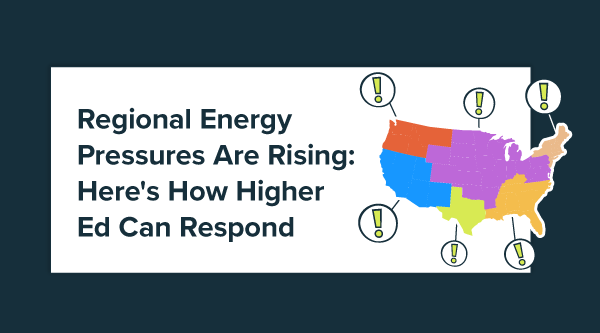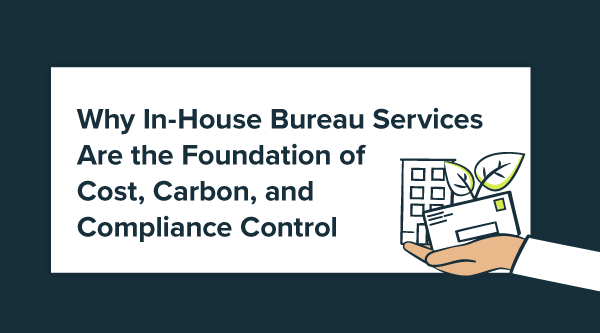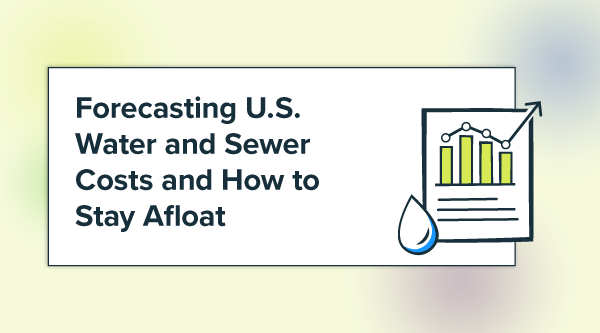Over our 40-year history, we have seen or heard about scenarios where an EMIS vendor promises to deliver comprehensive functionality, only to fail to meet the customer’s requirements during the implementation stage. The solution (and the price) might have looked appealing at first glance, but if the client stakeholders would have taken a closer look, they might have recognized that the application was more flash than substance.
If you are in the market for utility bill accounting and energy management solution, you owe it to yourself and your organization to ask potential vendors the hard questions. To get you started, here’s a list of questions we recommend you ask:
1. How does your software handle deregulated pricing scenarios for commodities such as electricity and natural gas?
Utility bills have become more detailed and complex in the deregulated energy environment, where one vendor may provide a commodity and another vendor may deliver it. When your EMIS software captures all that utility data, can you be sure that you are tracking what you want to track, and not double counting the data?
2. Does your software offer an accounting interface to eliminate redundant data entry and streamline utility bill workflow?
Make sure that your chosen EMIS has the ability to address all interface issues. Don’t be satisfied with a system that requires you to enter the same billing information again and again in multiple systems. It’s a recipe for error and inefficiency. Your EMIS solution should deliver more.
3. Can your EMIS perform percentage bill splits and chargeback allocations based on imported meter readings?
Many campus-type and multi-tenant organizations manage utility expenses through internal billing. The processes involved in calculating and allocating departmental or tenant energy costs can be complex. Make sure your EMIS can perform any necessary internal invoicing tasks using calculations based on data from your submeter network.
4. What are your options for bill entry/import?
How are you planning to get energy data into your EMIS? How many years of historical data do you intend to migrate for benchmarking purposes? Your solution should be robust enough to handle a variety of migration options including manual data entry, flat file import, EDI, OCR, and bill image archiving. Remember, the goal is to spend less time getting data into the system and more time getting results out.
5. How does your software audit for potential utility bill errors?
Verification of data is critical for energy management analysis. We all understand the phrase “garbage in, garbage out.” Make sure your EMIS provider has a robust set of software tools for ensuring the accuracy of incoming data.
6. Who resolves utility bill-related issues?
It’s safe to assume that you will encounter some billing or utility account issues along the way. What happens after they’re identified? You and your staff may not have time to research and resolve the issues. If that’s the case, make sure your vendor offers a service to do it for you.
7. How frequently do you update your software, and what services do you offer to assure long-term customer success?
A key metric for software solutions is the pace of development. Too many EMIS vendors are willing to sell a legacy product with the full knowledge that their solution is not keeping pace with technological advances and energy industry changes. Make sure you understand your software vendor’s release schedule and development commitment for your specific solution. Verifying the vendor’s long-term viability is also important for your peace-of-mind. Start-up firms may claim to have, and even “demonstrate,” a lot of bells and whistles, but they often lack the experience required to provide a holistic solution or understand the energy management intricacies that are unique to your industry.
8. Do you outsource your technical support? If so, where?
We’ve all had the unpleasant experience of speaking to a support representative who either couldn’t understand our questions or couldn’t answer them. Too many EMIS vendors are willing to outsource Customer Service without outsourcing the expertise required to meet customer needs. Maybe it’s cheaper, but will it work for you or against you? Make sure that your solution provider has the bandwidth for timely technical support and customer success.
9. Does your software offer the ability to create estimated bills (accruals) based on historical bills when it’s necessary to “fill” an accounting period with data?
There are 15 business days left in the quarter, and your Accounting Department is demanding a quarterly utility expense report. What do you do?
Your energy management software should be able to help you fill in those awkward gaps at the end of the accounting period so that you can tell an accurate story regarding your energy use and cost. If accruals are important to you, make certain that your EMIS can deliver.
10. Can your software accommodate a customizable workflow process that allows for supervisory approval of bills prior to payment?
Utility bill management can be a challenging and cumbersome process, especially for large organizations with hundreds or even thousands of monthly bills from numerous vendors. When processes break down, late fees, even shut-off notices, may result. Your EMIS needs to provide options for streamlining and enhancing your bill payment workflow.
11. Can you provide a list of three references from organizations using your solution for five years or more?
There’s a lot of venture capital floating around the energy management industry, but all that glitters is not gold. Startups have their place, but can they really provide the expertise and experience that you need to take your energy management program to the next level? Ensure that your EMIS provider has a history of success in the industry. Follow up with references, and make sure to ask the questions that reflect your organizational priorities.
12. Does your software include IPMVP-compliant measurement & verification (i.e., Cost Avoidance) functionality?
You invest heavily in retrofit projects, employee education, and other efforts to conserve energy, but how do you know that your efforts are yielding desired results? Make sure that your EMIS vendor is conversant in the methods and processes for performing accurate and verifiable M&V calculations. Is your prospective EMIS solution compatible with commonly accepted assessment practices?
13. Do you offer the ability to view, analyze, and report on my energy use and cost data in Actual, Calendarized, and Weather-normalized formats?
If your billing period is 33 days long in one year, and 30 days long in the next, it can be very difficult to make meaningful comparison from year to year using actual billing data. A robust EMIS is one that will give you reporting options to normalize for key variables such as billing period length, facility square footage changes, and weather. Determine the specific nature of your reporting needs, and make sure that your EMIS vendor can deliver before you sign on the dotted line.
14. Does your solution offer the ability to import and analyze interval (time-series) data?
Analyzing a facility’s energy use pattern will enable you to answer a variety of questions: Is my building turning on at the expected time each day? Are lights and other building systems setting back when they should be evening and on weekends? Are there any demand spikes that could be resulting in increased costs via ratchet rates or other tariff-related penalties? It’s important that the EMIS you select offers a convenient method for importing and analyzing interval data. Being able to sum interval data readings to generate a monthly bill is also useful for internal cost allocations and verifying utility vendor invoices.
15. Will my data be hosted in a secure environment? And will we retain ownership of our data?
Okay, that’s really two questions, but both related to the security of your organization’s data. It’s important to verify in advance that any potentially sensitive data—utility account numbers, employee names and email addresses, accounting information—is stored in a secure environment. And remember: It’s your data. You should always retain ownership of the data and be able to export it from the EMIS at any time.
If you are going to be contacting EMIS vendors for a direct purchase or evaluating RFP responses, these questions should help get you the answers you need to navigate your purchase successfully and procure a product that will provide your organization with years of reliable utility bill accounting and valuable energy management insights.
Want to know how EnergyCAP addresses these questions? Our responses are provided in the Field Guide, How to Spec and Purchase and Energy Management Information System (EMIS), which also includes tips for creating an energy management software RFP and purchasing via a GSA contract. You may also want to take a few minutes to review our other data-rich Field Guides: Implementing an EMIS, Utility Bill Processing, and Energy Benchmarking. Of course, you can also contact us for additional information.
{{cta(‘b7881ec3-e8bf-4455-a547-82c6e34de97a’,’justifycenter’)}}
Best-in-class portfolio-level energy and utility bill data management and reporting.
Real-time energy and sustainability analytics for high-performance, net-zero buildings.
A holistic view of financial-grade scope 1, 2, and 3 carbon emissions data across your entire business.
Energy and sustainability benchmarking compliance software designed for utilities.






